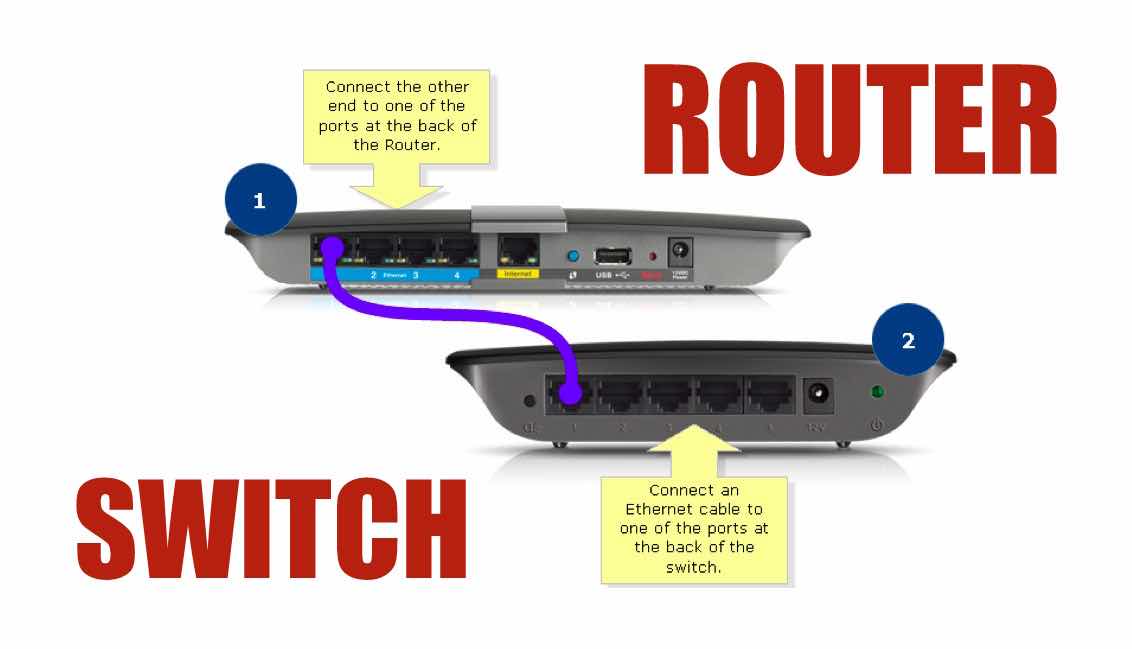 Short Bytes: Switch vs router – which one works where? Which one should be used for faster communication and which one is more secure? Well, we answer all the aspects of using a switch and a router in this article.
Short Bytes: Switch vs router – which one works where? Which one should be used for faster communication and which one is more secure? Well, we answer all the aspects of using a switch and a router in this article.
Let’s take a look:
Switch vs Router — Comparison and differences
Switch’s properties:
- Works at the Data link layer of the OSI layer
- Uses ‘filter and forwarding’ when it receives a data packet in form of a frame
- A virtual LAN can be created using a Switch which inside the same LAN separates the LANs and make them virtual to each other
- Usually comes with 24 to 48 ports
- Transmits Frames (layer 2 packets) and Layer 3 packets of the OSI model
- Uses its software for admin access and other configurations
- Has its own memory for memorizing the devices connected over to the network
- Can learn the MAC addresses and stores those addressed in a CAM (Content Addressable Memories)
- Supports Half as well as full duplex transmission mode
- A hub has only one broadcast domain
- Can support Spanning tree protocol
- No packet collisions occur commonly inside a Switch
- No dynamic sharing of the bandwidth
Router’s properties:
- Connects more than two networks unlike a Switch
- Works as a traffic police to direct a data packet
- Can be used for LAN, MAN, and WAN
- Its packet is called a packet unlike a frame at layer two and electrical signal at layer one
- It works at layer three or also known as network layer of the OSI layer
- It usually has 2-4-8 ports
- It also stored Ip addresses in a table called Routing table and from there, it decides where to send the data packet
- In router, every port has its own broadcast domain
- Dynamic bandwidth sharing
- Faster processing than a switch
- Can perform Network Address Translations (NAT)
Working differences — Switch vs router
Before you proceed to further reading, have a look at the basic concepts of the different networking devices and hardware types — hub, switch, router, modem, bridge, repeater.
Let’s say around fifty computers are connected in a local area network. In the network, there is also a common resource from where computers can download data locally. So, this network forms a kind of a private network. However, when one of the computers would want to get some data from online sites like Facebook or Google, they will have to go to the internet and fetch the data and that makes a public network
So, when a computer wants to access a public network, it sends a data packet to the Switch which is the next immediate device in terms of data transmission. The switch opens up the packet and looks for the destination where the request packet wants to go.
The packet is directed for the public internet or world wide internet and Switch has no idea about it. So, Switch forwards this packet to the router — ‘The default gateway’. A router works as a gateway that is more like it is a door to the outside world and gets the data that a particular computer wants.
However, inside the campus, all the computers are a part of the private network which is not known to the outside world. So, it tweaks the private packet into the public packet and vice versa. This is called NATting which we will cover in the later topics.

No comments:
Post a Comment